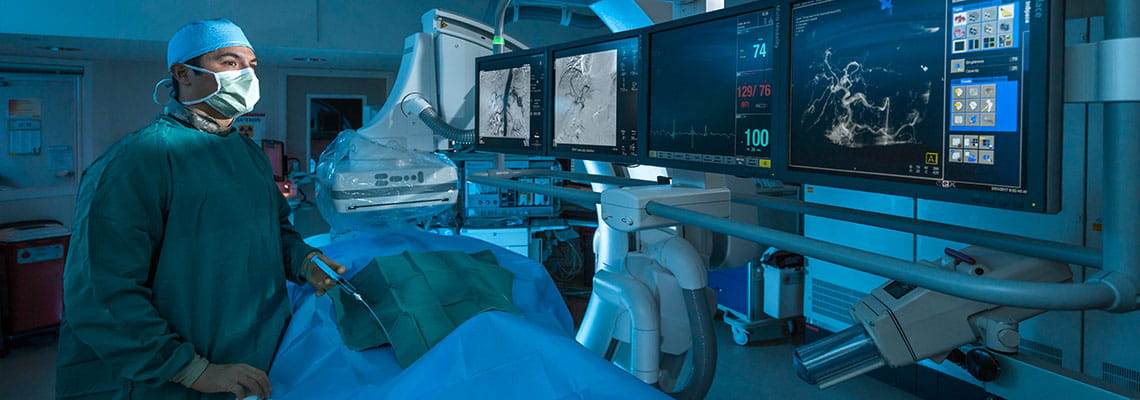Interventional Radiology Procedures & Treatments

Why Choose Houston Methodist for Interventional Radiology Procedures
Houston Methodist’s board-certified interventional radiologists use minimally invasive, image-guided procedures to diagnose and treat diseases. Our highly skilled doctors and staff have done thousands of interventional procedures and exclusively perform many cancer therapies, including radioembolization, chemoembolization, radiofrequency ablation, microwave ablation and cryoablation.
